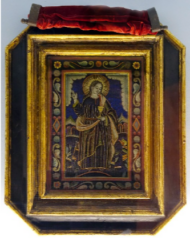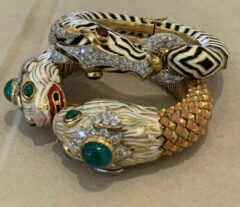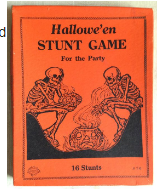
Some of the most common questions advisors hear from clients about their fine art and collectibles are, “Does my homeowner’s insurance provide coverage for my artwork? Do I need a special rider?”
A typical homeowner’s insurance policy affords you a little bit of coverage. And when we say a little, we mean extraordinarily little. Typically, homeowners’ insurance provides anywhere from $2,000-$5,000 total for each class of valuables.
As a rule of thumb, if you have items of value, it’s best practice to have them insured on a separate valuables or collections policy. However, not all valuables policies are created equal. When looking at coverage, you want to ensure the policy you select will have the necessary keys:
1. Coverage for both lost and stolen items
Not all carriers consider the loss of an item a covered event. Some carriers will only insure losses in the event of theft. You’ll typically need documentation from local authorities in the form of a policy report for your claim.
2. Coverage for items that appreciate in value
Look for a carrier that will consider items appreciating in value from the time it is insured until a loss. Does the policy allow for extension of coverage beyond an item’s scheduled value?
3. Coverage for items worldwide
Collectors often pick up pieces while abroad. Does your policy extend coverage to newly acquired items?
4. Coverage for items in transit
Valuables and collectibles often sustain damage while in transit. Ensure your carrier covers for damage in transit.
5. Coverage to repair as well as replace
When items are damaged, you want your policy to pay to repair the item and also replace it (depending on what’s needed).
6. Coverage for diminution in value due to damage from a covered loss
If a piece is damaged and the value of the it is diminished due to a covered loss, will your carrier settle the loss for diminution of value?
7. Coverage for losses to pairs or sets
When you lose an earring and need to replace the item, a suitable match might be hard to find. When you have coverage for pairs and sets, it allows you to replace both items with a matching set.
Additionally, it’s best practice to obtain appraisals on your valuables and collectibles every two to three years. Submitting updated appraisals to your insurance carrier will ensure that the coverage you have in place is adequate to protect you in the event of a loss. Failure to update a value of your collection may result in items being under-insured.
If you’re weighing your options when it comes to insurance, the best approach is to craft a tailored solution that meets your needs. Managing and selecting the right coverage can be challenging, which is why you should collaborate with a team of experts that has a proven track record working with fine art and collectibles.
By Kathyrn Norris
Managing Principal
Attenuer Risk






